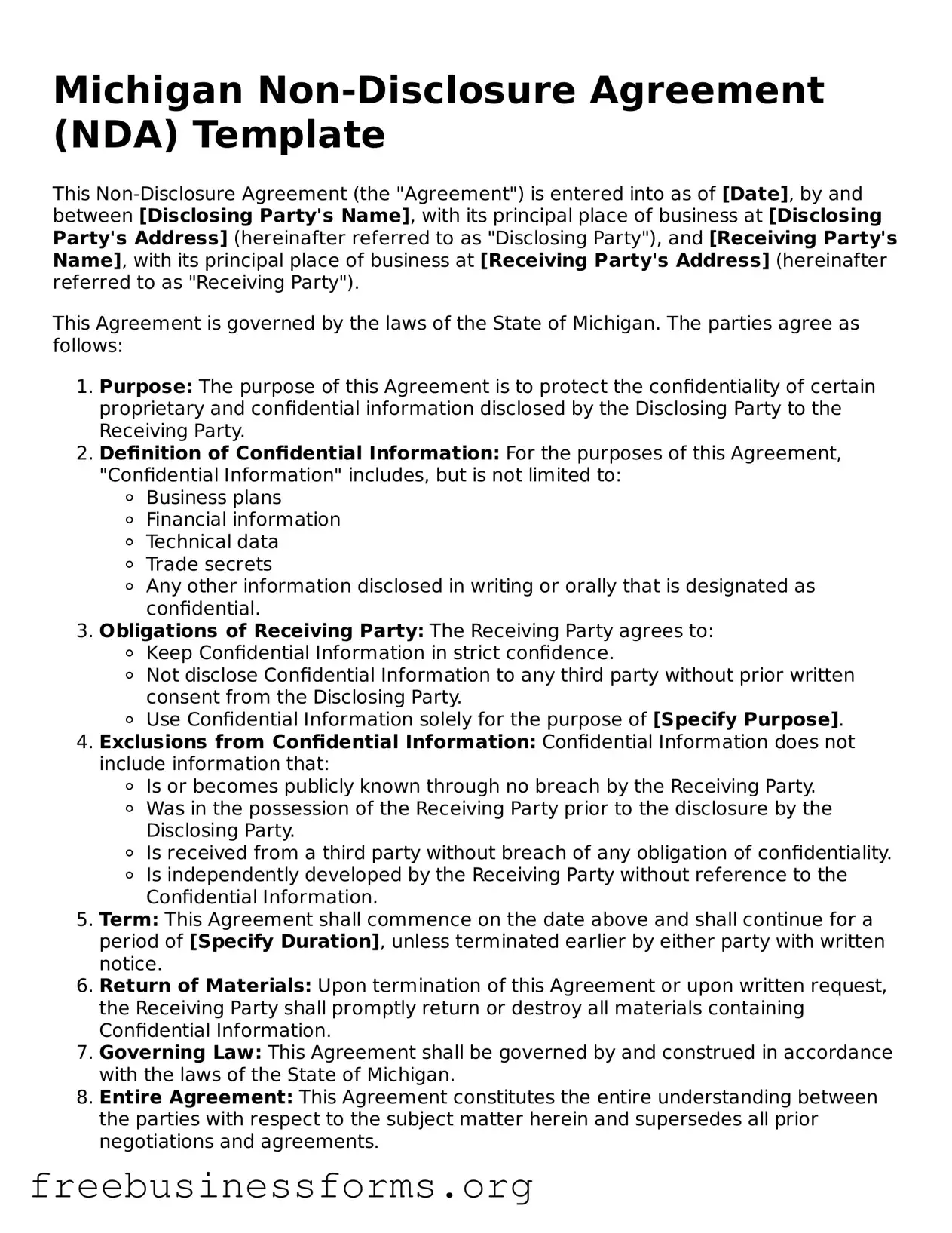Michigan Non-Disclosure Agreement (NDA) Template
This Non-Disclosure Agreement (the "Agreement") is entered into as of [Date], by and between [Disclosing Party's Name], with its principal place of business at [Disclosing Party's Address] (hereinafter referred to as "Disclosing Party"), and [Receiving Party's Name], with its principal place of business at [Receiving Party's Address] (hereinafter referred to as "Receiving Party").
This Agreement is governed by the laws of the State of Michigan. The parties agree as follows:
- Purpose: The purpose of this Agreement is to protect the confidentiality of certain proprietary and confidential information disclosed by the Disclosing Party to the Receiving Party.
- Definition of Confidential Information: For the purposes of this Agreement, "Confidential Information" includes, but is not limited to:
- Business plans
- Financial information
- Technical data
- Trade secrets
- Any other information disclosed in writing or orally that is designated as confidential.
- Obligations of Receiving Party: The Receiving Party agrees to:
- Keep Confidential Information in strict confidence.
- Not disclose Confidential Information to any third party without prior written consent from the Disclosing Party.
- Use Confidential Information solely for the purpose of [Specify Purpose].
- Exclusions from Confidential Information: Confidential Information does not include information that:
- Is or becomes publicly known through no breach by the Receiving Party.
- Was in the possession of the Receiving Party prior to the disclosure by the Disclosing Party.
- Is received from a third party without breach of any obligation of confidentiality.
- Is independently developed by the Receiving Party without reference to the Confidential Information.
- Term: This Agreement shall commence on the date above and shall continue for a period of [Specify Duration], unless terminated earlier by either party with written notice.
- Return of Materials: Upon termination of this Agreement or upon written request, the Receiving Party shall promptly return or destroy all materials containing Confidential Information.
- Governing Law: This Agreement shall be governed by and construed in accordance with the laws of the State of Michigan.
- Entire Agreement: This Agreement constitutes the entire understanding between the parties with respect to the subject matter herein and supersedes all prior negotiations and agreements.
IN WITNESS WHEREOF, the parties have executed this Non-Disclosure Agreement as of the date first above written.
Disclosing Party:
Signature: ________________________
Name: [Name]
Title: [Title]
Receiving Party:
Signature: ________________________
Name: [Name]
Title: [Title]
